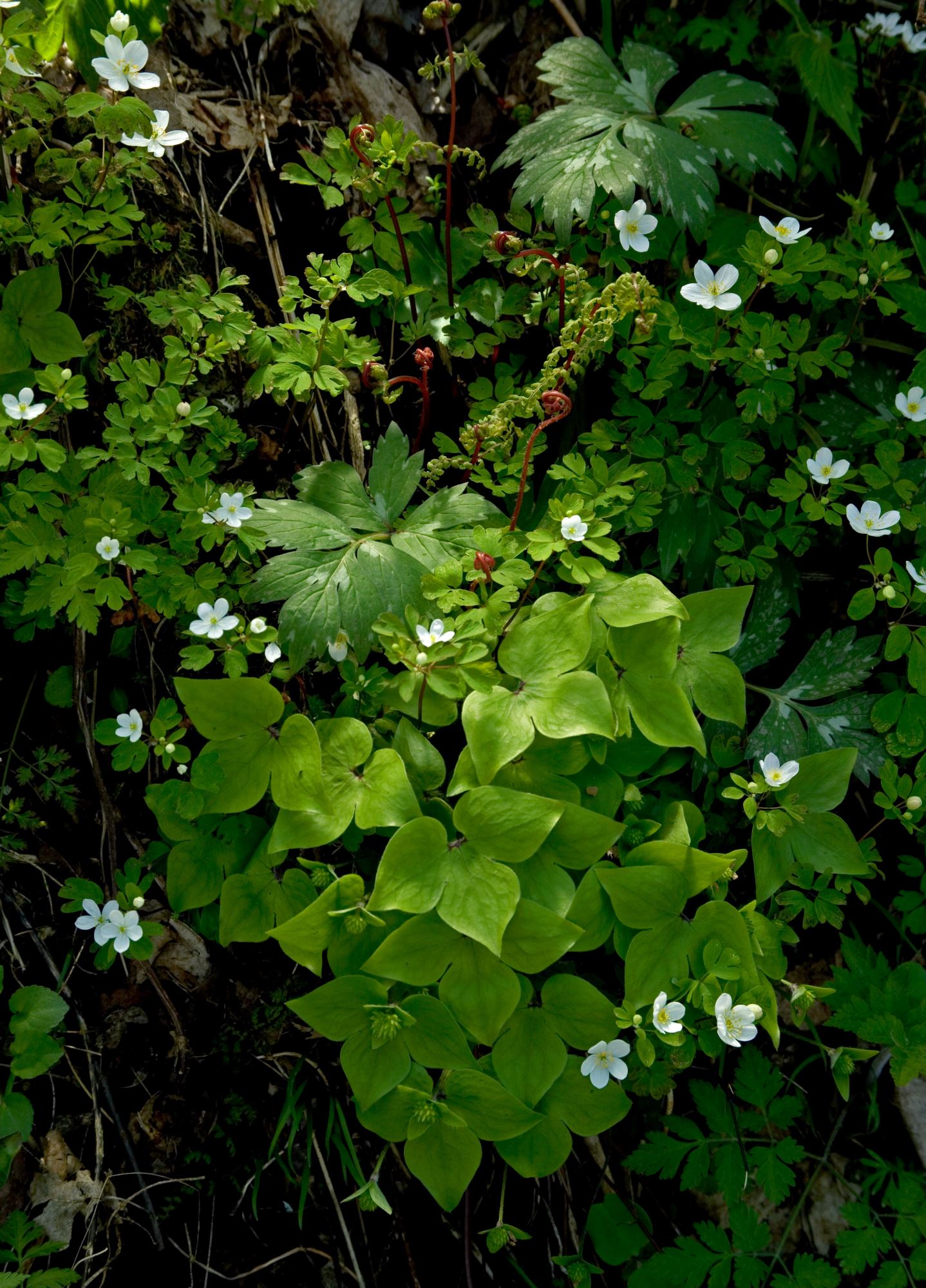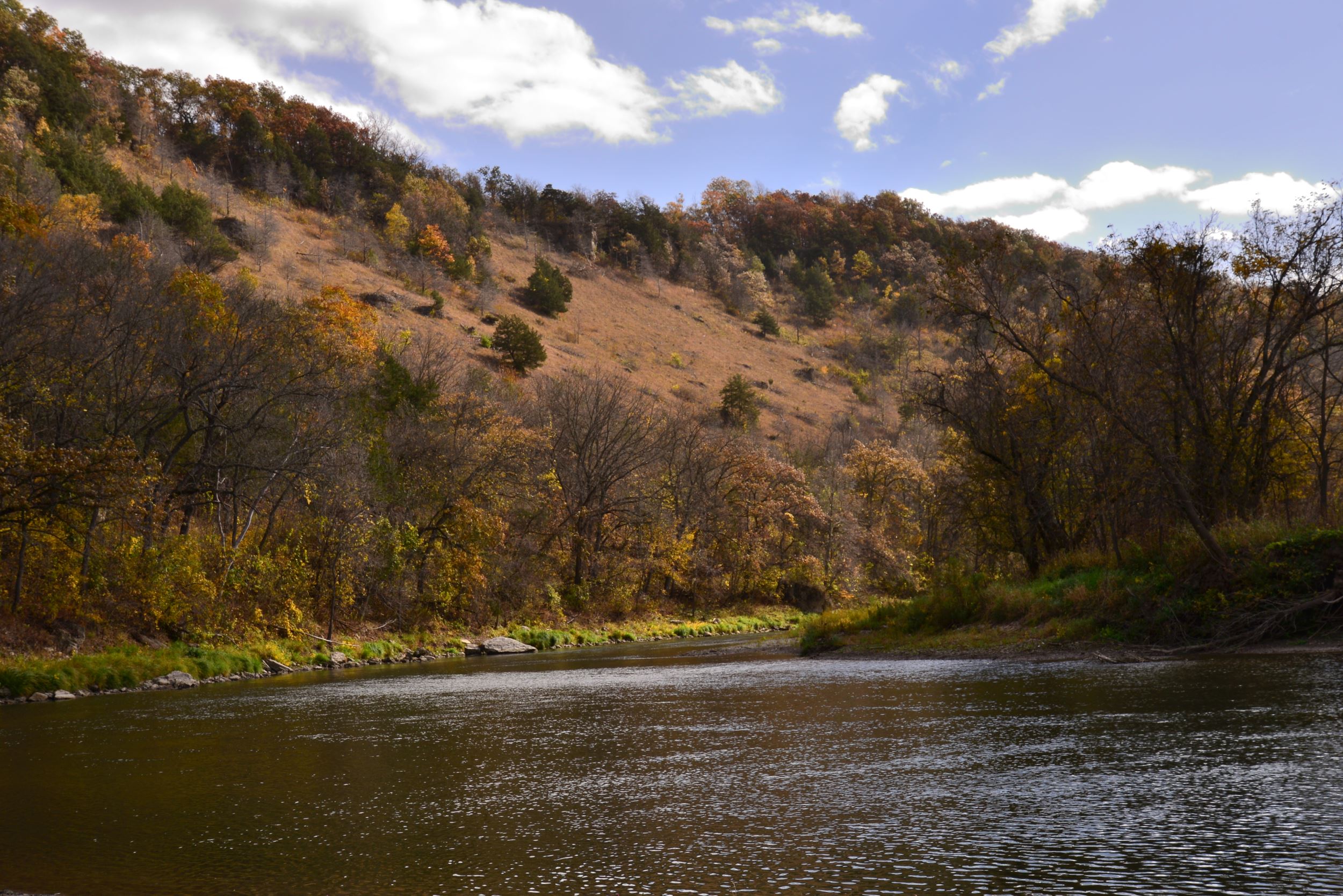Introducing: Heritage Valley
By Abby Hade Terpstra on May 31, 2017 in Blog
Protecting a wild and magnificent property in northeast Iowa is pushing INHF into new territory.
.jpg)
Oak-hickory woodlands cloak secluded hills and bluffs. Bony towers of limestone protrude from vibrant goat prairies on sun-soaked slopes. Three miles of the Upper Iowa River determinedly twist through its 1,182 acres. The dramatic shifts in the landscape capture your gaze in every direction. The perpetually moving water and wind clear your mind and sharpen your senses. It’s a soul-stirring place. And INHF plans to be its caring steward long into the future.
Ten years ago, the plan was different. Ten years ago, Heritage Valley was another traditional — though significant — transaction: INHF would purchase the Allamakee County land offered by an estate, seeing this as the last opportunity to keep this beautiful place whole and natural. We would hold the land while a public agency readied itself to be the long-term owner.
But things changed. A new approach was necessary. While INHF does have other lands it owns and manages in its portfolio, we’d never dealt with something like this. Heritage Valley is remote. It’s wild. And it’s expansive.
“We asked ourselves, ‘Is it worth preserving and protecting? Can we do it?’ The collective answer from the INHF board and staff was an emphatic ‘Yes’,” said David Mackaman, INHF board chair. And so a new chapter for Heritage Valley — and INHF — began.
 Over the last decade, INHF has gotten to know Heritage Valley. Volunteers in 2007-2009 conducted species inventories, turning up a meadow jumping mouse, finding creek heelsplitter mussels in the river and glimpsing Cerulean warblers. Luna moths spread their wings here alongside over a thousand other living species of plants and animals.
Over the last decade, INHF has gotten to know Heritage Valley. Volunteers in 2007-2009 conducted species inventories, turning up a meadow jumping mouse, finding creek heelsplitter mussels in the river and glimpsing Cerulean warblers. Luna moths spread their wings here alongside over a thousand other living species of plants and animals.
INHF staff and members have reveled in the intricate connections of the complex biomes here. We’ve compared the impacts of two floods: one scoured the river bottom cropland, while the next flood hit that same piece of land after restoration efforts, showing slowed water void of significant damage. Over and over again, Heritage Valley reveals to us why protecting and restoring it is the right thing to do. Such uniqueness, such diversity, such beauty and power is a gift worthy to preserve for all the abundant life there. The lessons learned are worthy to share with all Iowans, now and in the future.
Ten years later, INHF Blufflands Director Brian Fankhauser says, “Having the opportunity to manage Heritage Valley has been a highlight of my career. Heritage Valley has allowed us to form friendships with neighbors, volunteers and members that we have experienced in few other places. It is a wonderful resource that we, along with our partners, continue to enhance through restoration efforts.”
Because of its grand wildness, Heritage Valley will be periodically open to the public, but not in an unlimited way. Part of the majesty of the place is its secluded wildness, something unique to Iowa.
“INHF is able to provide something at Heritage Valley that truly complements the other protection that has been done along the Upper Iowa River,” said Joe McGovern, INHF president. “We’ve helped protect a lot of public land, where conservation agencies provide outdoor experiences and recreation opportunities. We’ve established many conservation easements, where private landowners care for their land. Now, by owning Heritage Valley long-term, we offer a unique opportunity. At Heritage Valley, INHF will be focused on wildness — for nature’s sake — while offering some very intentional public experiences for people to see the property. It’s our intention to continue this sort of management long into the future.”
One such intentional public experience is the annual Garlic Mustard pull, held the past five springs. After last year’s pull, longtime INHF member Bill Witt remarked, “Each time I go to Heritage Valley, my spirit soars. I can see, touch, smell the results of INHF’s stewardship: the flourishing hill prairies, young oaks on the valley floor, warblers and woodpeckers, oak-hickory savanna recovering. All these things — especially that INHF intends to keep Heritage Valley as a crowning example of INHF’s vision and mission — infuses me with renewed gratitude and hope.”
INHF members and the public will get the chance to experience the full wildness of Heritage Valley now and into the future. This year, as INHF raises the remaining funds for the project, we’ll be showcasing Heritage Valley through a series of volunteer, educational and recreational events that highlight the important ecosystems, archaeological and cultural significance and conservation efforts taking place here and throughout the region.
Heritage Valley fits neatly into the regional puzzle of conservation in the Upper Iowa River watershed. In David Faldet’s book “Oneota Flow: The Upper Iowa River and Its People,” he writes, “The health of the [Upper Iowa] river, the Mississippi into which it feeds, and the ocean into which the water runs is best guaranteed by keeping the incredible mosaic of biological communities that feed the river intact and healthy. Taking care of the land and water is a way of taking care of ourselves and, ultimately, of our children’s children.” Heritage Valley complements and enhances what public agencies and private landowners are doing to protect and restore this priority region.

“I’ve paddled up and down North and South America and I can tell you that Heritage Valley is as wild a place as I’ve ever seen,” says Vern Fish, INHF board member and retired Black Hawk County Conservation Director. “It’s a world-class float full of inspiring landscapes. The restored and protected natural views are amazing.”
These sorts of experiences are what inspired INHF to pursue permanently safeguarding Heritage Valley in the first place.
“With the support of fellow Iowans, INHF embarks on the bold mission of preserving and protecting Heritage Valley permanently, for all generations,” says Mackaman. “This is the very heart of our work at INHF, to enrich lives by connecting people to the land and to nature.”